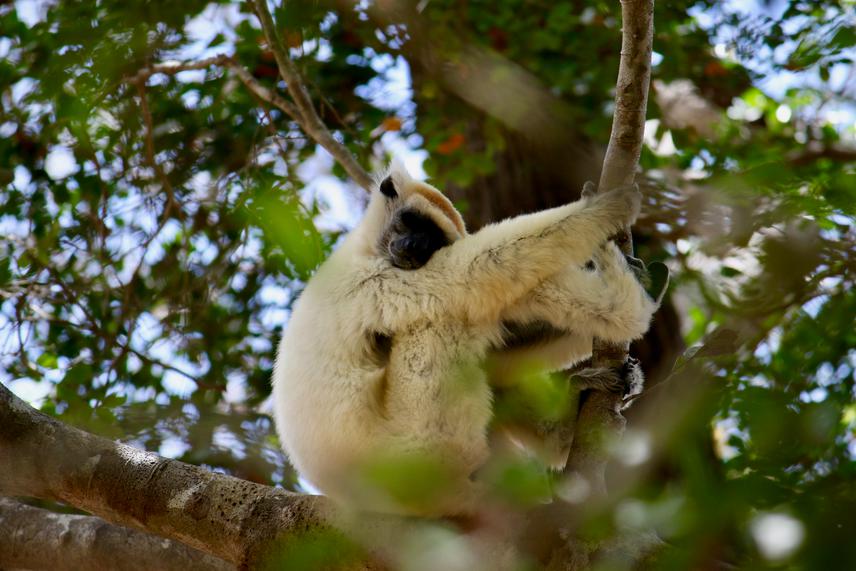Meredith Semel
Other projects
4 Sep 2017
A Division of the Crown: Using Novel Tracking Collars to Examine Behavioural and Physiological Responses to Fragmentation in Crowned Lemurs (Eulemur coronatus)
24 Oct 2018
A Division of the Crown: Using Novel Tracking Collars to Examine Behavioural and Physiological Responses to Fragmentation in Golden-Crowned Sifakas I
29 Oct 2019
A Division of the Crown: Using Novel Tracking Collars to Examine Behavioural and Physiological Responses to Fragmentation in Golden-Crowned Sifaka II
The golden-crowned sifaka (Propithecus tattersalli) is a poorly understood and critically endangered lemur species endemic to the Daraina region of northern Madagascar. This project is investigating the (1) social cohesion, (2) stress physiology, and (3) habitat requirements of this species across their entire range. I am conducting these studies by using novel tracking technology and endocrinology techniques to monitor group movements and stress hormone levels. In collaboration with several Malagasy organizations, I will inform and engage local communities, and apply the essential information collected in the project to the development of conservation strategies to conserve golden-crowned sifakas and their habitat. I am also collaborating with the local NGO Fanamby, local community members/students, and the Daraina guide association to improve science education through the newly established “Daraina Outreach Centre”.

Golden-crowned sifaka are critically endangered lemurs endemic to the Loky-Manambato region of north-eastern Madagascar. They are urgently threatened by habitat destruction, fragmentation, mining, potential bushmeat hunting, and road expansion. The 2,000km2 region encompasses a unique biogeographical transition zone from Madagascar’s northern and western dry deciduous forests to southern humid forests. Currently, information regarding the ecological role and habitat needs of the golden-crowned sifaka is greatly lacking. My project will continue to address the knowledge gap concerning golden-crowned sifaka habitat structure, resources within their various habitat types, and how anthropogenic disturbances impact their behaviour and health. The ultimate goal of this research is to collaborate with local communities to assess behaviour, physiology, and habitat structure of golden-crowned sifakas in order to establish a replicable, long-term monitoring and conservation program.
Three specific objectives will be used to achieve this goal, while providing information that is currently lacking for the critically endangered golden-crowned sifaka.
1) Use novel tracking technology to understand how golden-crowned sifaka shift their ranging and social behaviour in altered habitats
2) Identify if forest type and anthropogenic factors influence faecal glucocorticoid metabolites levels
3) Determine habitat structure, food availability, and nutritional needs of golden-crowned sifaka
Connecting golden-crowned sifaka spatial behaviour to their physiological responses can help us understand the impacts of land management practices. Through understanding their stress responses, we can determine the degree of fragmentation golden-crowned sifakas can handle before declines in their physiological health occur. Knowledge of this threshold will allow us to focus restoration efforts and forest protection in appropriate habitat types and locations.
In addition to the research focus of this project, we will continue to work with local guides, Fanamby staff, and local community members to reforest altered landscapes, develop movement corridors between fragments, and train guides to patrol the forests and identify illegal activities. We will also continue our educational programs through the Daraina Outreach Centre to improve environmental education in the region and facilitate guide training programs. We are also initiating three entrepreneurial activities in the region: 1) the chicken coop project, 2) apiary for honey production, and 3) sap harvesting from Canarium velutinifolium trees (Burseaceae family, Malagasy vernacular “haramy”). These three activities will enable local individuals to engage in sustainable employment options and funds generated will provide competitive employee stipends and allow the outreach centre to become self-funded.